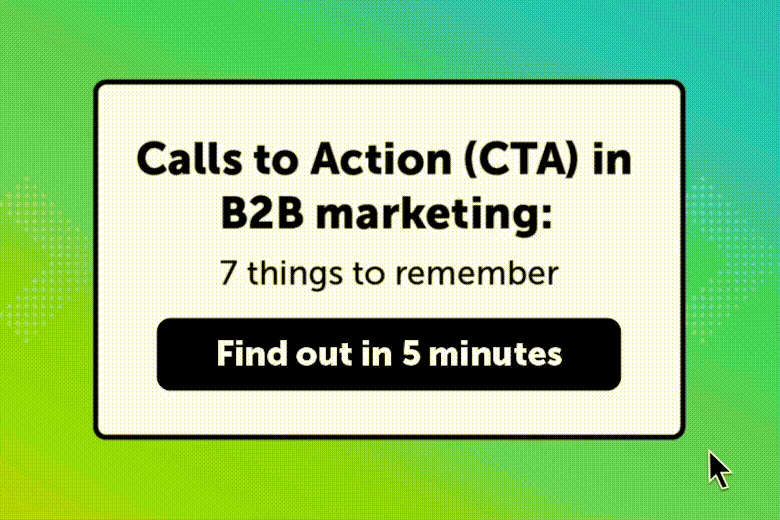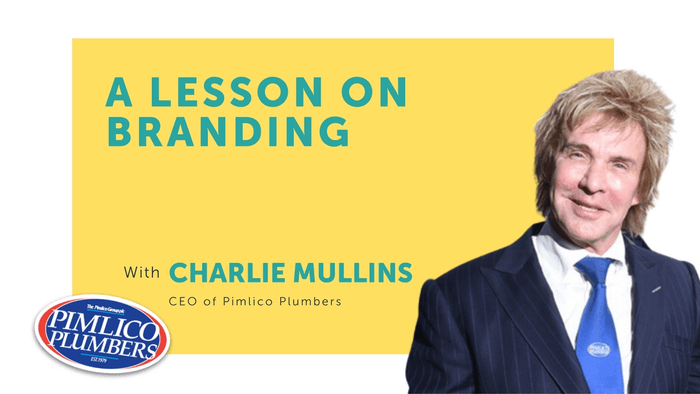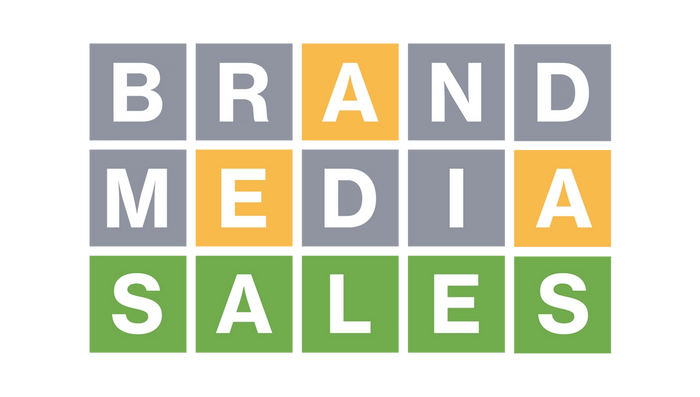Marketing
Calls to Action (CTA) in B2B marketing: 7 things to remember
Someone read your content — that means you published something engaging and informative, and you’ve got some expertise that your reader could benefit from. That means that your reader is a prospect, and they should become a lead. However, without a good CTA, they won’t, and a brilliant piece of content could help your reader, but get you nothing.
Your call to action is not an afterthought — it’s not something you tack on the end of a blog post just to sign off. It’s what decides whether your reader engages with you or clicks away, and when you’ve invested in content to grow and market your business, you need that engagement.
No matter how interesting and relevant your content is, it won’t convert anyone if it doesn’t give them the right push to get in touch, sign up, or opt in. Some have found that they could increase your revenue by 83%, and their average order value by 49%, just by getting their CTAs right.
Here’s how you can make sure your CTAs turn readers into leads.
Purpose
Hubspot identifies eight types of call to action; lead generation, form submission, reading more, product discovery, social sharing, lead nurturing, deal closing, and event promotion.
Obviously, the call to action that you choose will be dictated by what your content was designed to achieve, and importantly, it should communicate exactly what you’re asking your reader to do. This is where the copy and the CTA work together — the copy tells the reader what they can get or learn from you, and the CTA nudges them to take the opportunity.
With that in mind, a CTA that’s too generic won’t get as many clicks as one that expresses what your reader should do and why. ‘Click here’ tells you to click, but something like ‘Get my free security audit’ compels you to.
Urgency
Is there something in your call to action that will make your reader act now, rather than later, when they may forget all about it?
If there’s scarcity in your offering, it’s easy to express that with a ‘don��’t miss out’ message, but if there’s no promotional time limit, or product shortage, you still want to instil a sense of urgency. You can do that by leaning on the emotion of the problem you solve.
Let’s say your service improves customer retention, and you’ve written an article with five tips to decrease churn. As a CTA ‘Find out more’ has none of the urgency of ‘Stop losing clients now’. If a company has a problem with client turnover, the promise that they could do something today to stop it will drive them to a response.
Ease
Your prospects have a lot of things demanding their attention and lots of reasons not to answer your call to action — don’t give them any more.
If there’s anything that looks complicated about your CTA, the most common reactions will be ‘I don’t have time for that’ or ‘I can’t be bothered’. Remember, whatever product or service you’re promoting, you’re ultimately doing so with the promise that you’re going to make their life easier. That promise is completely undermined by a call to action that asks someone to click on something, fill in their details, describe their business, and arrange a call.
Ask them to do one thing that looks quick and easy, and that answers WIIFM (What’s in it for me?).
Call them to ONE action
By the same token, you will muddy the water if you ask your audience to do several things. If at one point your CTA is ‘read more’, then at another it’s ‘book a demo’, and later it’s ‘download the whitepaper’, you’ll find:
- It’s very difficult to measure the success of your CTAs
- The CTAs will get in each other’s way, and you’ll get fewer conversions for each
That doesn’t mean you can’t give one call to action several times. In fact, you might find that calls to action ‘above the fold’ increase your conversion hugely — one test found that it increased conversion by 304%.
Testing
On the topic of measuring success, improving your CTAs is an ongoing process that involves testing and experimentation. A/B testing is one of the most simple ways to establish what performs well — in the case of an email, for example, that would involve sending two different emails, which are identical except for the CTA. One CTA may perform better than the other, which could start to build a picture of what CTAs are effective for your audience.
You also need to consider what metrics describe success. These differ according to the position of your content in the sales funnel. If your content is about awareness, then click-throughs and views are a useful gauge. If your content is for people further along the customer journey, your CTAs need to translate into more specific actions, and you need to be more sophisticated with your metrics to track the behaviour of your audience, and make sure you’re directing them to the next steps that they need to take towards closing the deal.
Sales funnel position
Not only does the position in the funnel dictate your CTA metrics, it also dictates the CTA itself. If you’ve written a blog post that’s designed to raise awareness at the start of the customer journey, then telling your reader to ‘Buy Now’ would be off-putting and completely irrelevant to your goal.
On the other side of the coin, if you’ve nurtured your prospects through the customer journey, and you need to close the business, they don’t want to ‘Read More’ — they want to buy. Don’t talk your way out of a sale.
Type of content
Blogs, guides, whitepapers, social media, emails, banner ads, and websites will need something different from a call to action, which is dictated by the medium as well as the funnel. Consider these three things:
- Based on what the prospect is reading, what is likely to resonate with them in a CTA?
- Indicate clearly what your reader will find when they click — if they find themselves somewhere they didn’t expect, that will be jarring and interrupt the flow of the customer journey
- Do you actually want a click? Sometimes the best next step isn’t digital. If, instead of a link, you give a phone number, that means you could remove a step on the path to capturing a lead. Instead of the prospect:
- seeing content
- clicking a link
- arriving on a landing page
- entering their details
they
- see the ad
- call the business
- the business can capture the lead
With the right content, at the right point in the funnel, you may benefit from a different kind of CTA.
Speaking of CTAs, here’s ours. If you want your content to move your prospects through the sales funnel, and bring you more leads, Nutcracker can make that happen. Find out how we can craft your content and CTAs by calling 020 3941 0305.
Share this:






